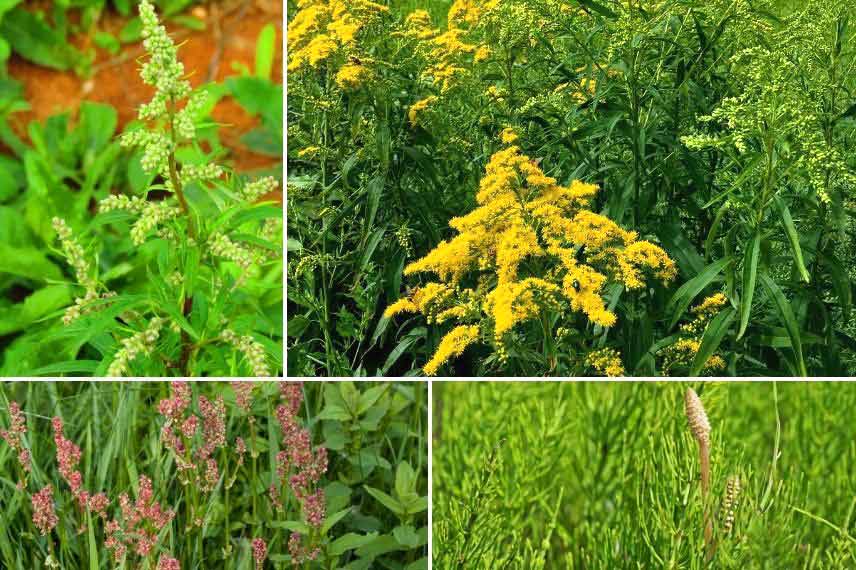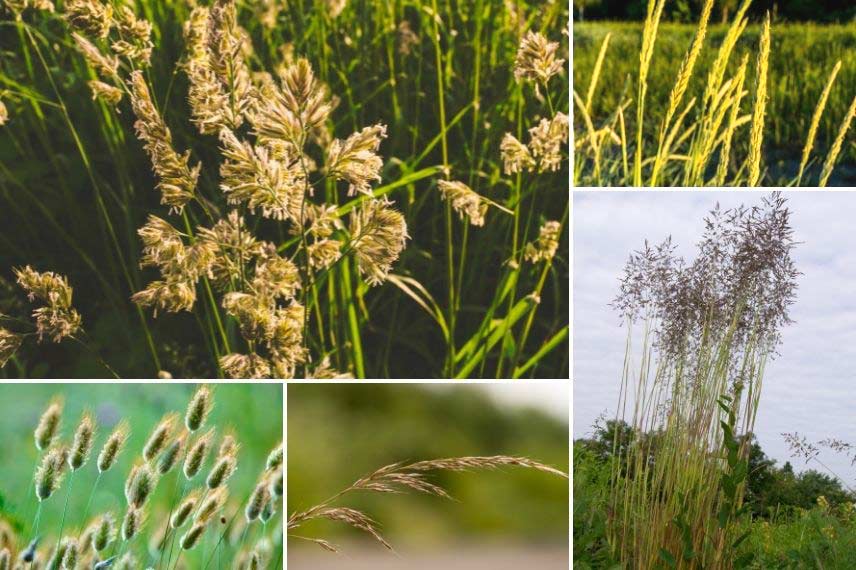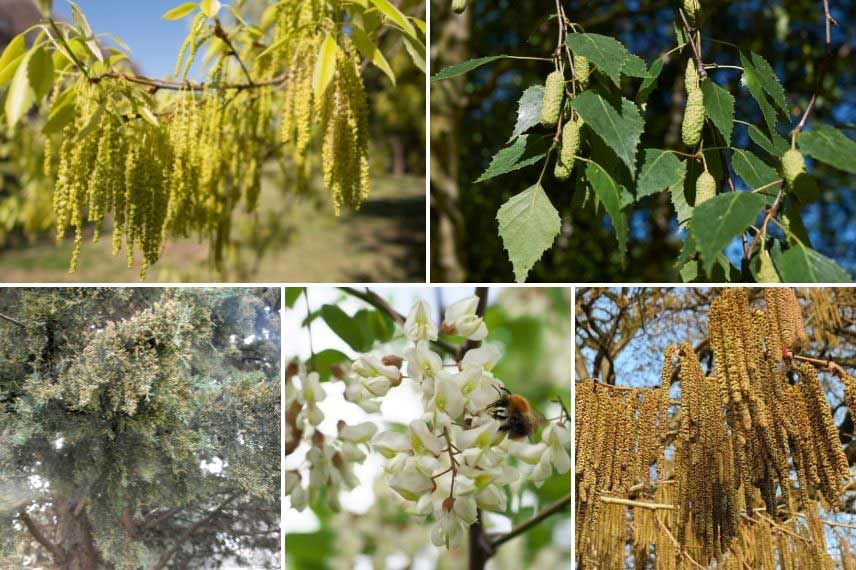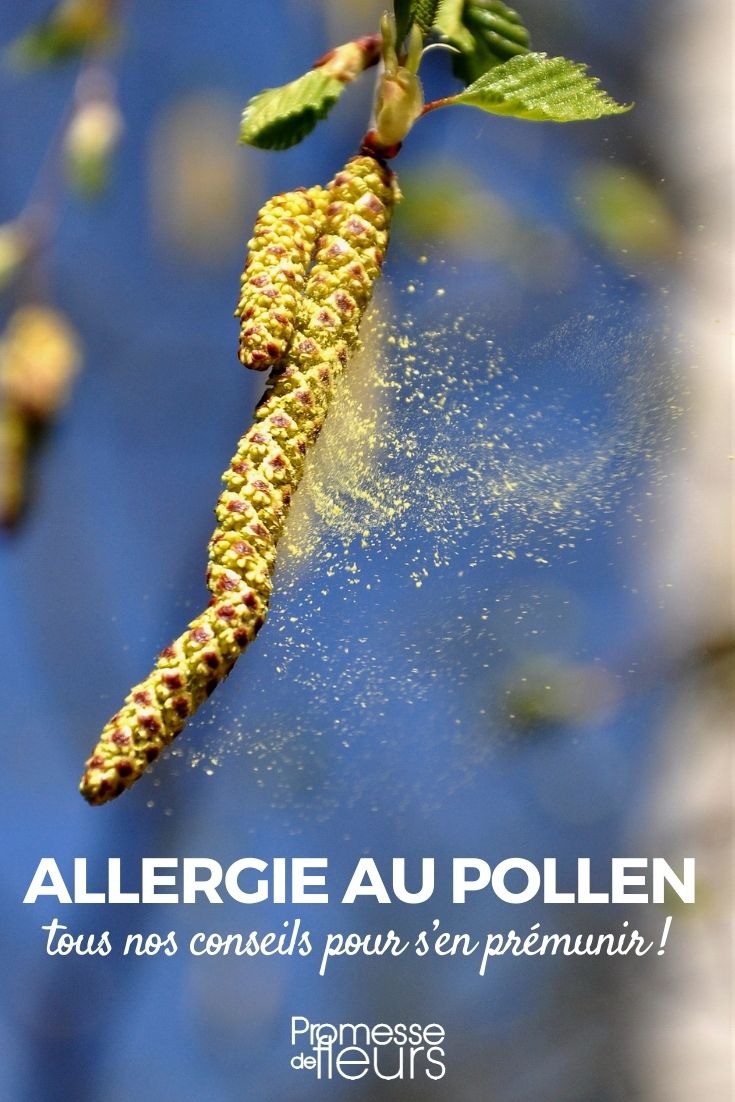
Pollen allergy: how to protect yourself?
Plants to Avoid and Our Tips to Limit Allergic Symptoms
Contents
Spring is the season of renewal, heralding the return of birds, sunshine, and warmth. However, for those allergic to pollen, it also marks the beginning of a particularly challenging time. Hay fever, with its array of unpleasant and sometimes debilitating symptoms, affects nearly 30% of adults and 20% of children, according to the Ministry of Health.
To protect oneself, it is essential to first understand the various plants that cause allergies, along with their modes and periods of action. We have compiled a list of the main allergenic plants to avoid, as well as the measures to implement to minimise risks and better manage this sensitive period.
Understanding Pollen Allergies
The implicated pollens
The pollens that cause problems and are involved in seasonal allergies are those from anemophilous plants, which disperse by wind. After flowering, pollens are thus found in large quantities in the air, allowing the plant to reproduce.
In contrast, entomophilous plants, whose pollen is carried by insects to ensure reproduction, are not among the culprits.
It is therefore this method of aerial dissemination that triggers allergic symptoms. Pollens infiltrate the respiratory tract and alert the immune system.
Among anemophilous plants, some pollens will cause allergies (this is referred to as having a moderate or strong allergenic potential), while others will pose little or no problems (low or negligible allergenic potential). Some plants, like pines, can produce a large quantity of pollen but remain weakly allergenic. It is the plants that combine a high concentration of pollen in the air with pollen containing many allergens that are the most formidable.
Risk periods
Pollen allergy periods vary according to geographical area and weather conditions. They generally start earlier in the south than in the north of France. Seasonal allergies indeed appear with the return of mild weather and the first spring flowers. From one year to the next, the waves of pollination can also vary, by a few days to a few weeks.
The risk periods last several months, from early spring in March-April to the end of summer in August-September. The peak usually occurs between April and June, but varies according to the type of implicated plants.
Certain climatic and environmental conditions also exacerbate the risks of allergies, by favouring the dissemination of pollens: absence of rain, heat, presence of wind, etc. Pollution is also an aggravating factor that can intensify these problems.
Allergic symptoms
The manifestations of a seasonal allergy, or “hay fever”, differ from person to person, depending on the amount of pollen in the air and the plants involved. The reaction to pollen is immediate when allergens come into contact with the respiratory mucous membranes (there is no incubation period).
Pollens affect the mucous membranes and respiratory tracts, potentially causing allergic rhinitis to asthma attacks. Pollen allergy is generally identified by the following symptoms, which can occur together.
- Tingling and nasal discharge
- Conjunctivitis
- Itching in the throat or mouth
- Coughing
- Sneezing
- Breathing difficulties
- Unusual fatigue
- eczema or urticaria
Read also
7 toxic shrubsThe main allergenic plants to avoid
We have listed the most common allergenic plants, with moderate to high allergenic potential, that you are likely to encounter in our territory. Some plant genera have several different species with allergenic pollen.
You will also find more details on the site plantes-risque.info, launched by the Ministry of Solidarity and Health, which lists all species that can cause respiratory allergies due to pollen.
Herbaceous Plants
Herbaceous plants often grow spontaneously in nature and can be found everywhere: in gardens, along roadsides, in meadows, in wetlands, in forests, in fallow land, etc.
Among the herbaceous plants known to pose allergy risks, we can mention:
- common mugwort (Artemisia vulgaris);
- ragweed (Ambrosia artemisiifolia);
- white goosefoot (Chenopodium album);
- sorrel (Rumex);
- common pellitory (Parietaria officinalis);
- lanceolate plantain (Plantago lanceolata);
- field horsetail (Equisetum arvense).

Artemisia vulgaris, Ambrosia artemisiifolia, Rumex and Equisetum arvense
The grasses (or Poaceae) are also among the most allergenic plants and are very widespread. Among them:
- reed canary grass (Phalaris arundinacea);
- tufted hairgrass (Deschampsia cespitosa);
- cocksfoot (Dactylis glomerata);
- sands ryegrass (Leymus arenarius);
- meadow fescue (Festuca pratensis);
- timothy hay (Phleum pratense);
- bulbous oat grass (Arrhenatherum elatius);
- meadow soft grass (Holcus lanatus);
- hare’s-tail (Lagurus ovatus);
- perennial ryegrass (Lolium perenne);
- cereals such as wheat, rye, barley, oats, millet, corn, …

Phalaris arundinacea, Leymus arenarius, Festuca pratensis, Arrhenatherum elatius and Lagurus ovatus
Trees and Bushes
Many trees, bushes, or conifers present in our territory pose allergy risks:
- alder (Alnus);
- birch (Betula);
- cedar (Cedrus);
- common hornbeam (Carpinus betulus);
- oak (Quercus);
- cryptomeria (Cryptomeria);
- cypress (Cupressus);
- maple (Acer);
- common ash (Fraxinus excelsior);
- juniper (Juniperus);
- beech (Fagus);
- mimosa (Acacia);
- mulberry (Morus);
- hazel (Corylus);
- olive (Olea europea);
- willow (Salix);
- lime (Tilia);
- privet (Ligustrum).

Allergenic flowers of Alder, Birch, Cypress, Acacia, and Hazel
Diversifying our landscapes and prohibiting the mass cultivation of risky species, in both urban and rural areas, is therefore a real challenge in the fight against allergenic pollen.
How to minimise the risk of allergies?
Opt for a Pollen-Free Garden
Logically, to protect yourself from potential pollen allergies, the first thing to do is to avoid planting highly allergenic plants at home.
Therefore, banish the previously listed plants and turn to other crops: in the plant world, you have plenty of choices!
Consider, for example, a French garden, a garden with a mineral aesthetic, or a Japanese-inspired garden: clean, well-maintained, and regularly pruned, they leave no room for allergenic “weeds.” To replace the lawn, you can also opt for perennial groundcovers.
Prioritise flower beds (roses, geraniums, pansies,…) and small bushes (brooms, camellias, lilacs, hawthorns,…). To add height, climbing plants are unmatched. Think of passionflowers, ivy, or wisteria.
In a suitable climate, a dry garden with cacti and succulents will require little maintenance and protect you from allergies.
Around a pond or water feature, aquatic plants like lotus or water lilies will thrive without allergy risk. These are indeed hydrogamous plants, whose pollen is carried by water.
Finally, in the vegetable garden, grow aromatic herbs (parsley, rosemary, oregano, mint,…), as well as vegetables and small fruits (salads, tomatoes, beetroots, melons, beans, strawberries,…).
For further reading, you can even choose to create a hypoallergenic garden, banning all plants that may cause allergies or irritations through their pollen, as well as through their latex, sap, or fragrance.

Solutions to limit allergy risks in the garden: dry garden with cacti and succulents, replacing grassy areas with alternatives to lawn (here Lippia nodiflora) and vegetable garden
Stay Informed
Anticipating allergic episodes and pollen emissions is crucial. This allows sensitive individuals to adjust their treatment and implement the preventive measures we have just discussed.
To do this, many tools are available to keep you informed. In our territory, there is indeed a good network of information created to warn allergic populations of current or upcoming risks in real-time. You can, of course, also consult your doctor, pharmacist, or allergist.
The National Network for Aerobiological Surveillance (RNSA) is an association specialised in studying the air’s content in biological particles (pollens, moulds, …), which present allergy risks to the population. It uses sensors placed in various locations that draw in air, mimicking the rhythm of human breathing. The analysis then identifies the pollens and the quantity present in the air. The RNSA informs allergists and patients in real-time on its website, via a newsletter, or the app. It indicates emission peaks, as well as the beginnings and ends of risk periods.
Regional pollen monitoring stations also list allergenic plants specific to your geographical area, while indicating risk periods. Regular air samples are taken, providing precise local information. To sign up for alerts, visit the Pollen Alert website. You can also become a “sentinel” in certain regions to participate in this exchange network, sharing your own observations and knowledge, whether you are a professional or an amateur.
Finally, phenology can also help those allergic to pollen. This science relies on observing various indicators provided by nature. It allows for precise knowledge of the periods presenting the highest risk, according to different plants and the relevant geographical area. For more information on this topic, we invite you to consult Olivier’s article: “Phenological Indicators: What Are They?”.
Some Preventive Measures
In addition, common-sense preventive measures will help protect you from pollen and limit allergy risks.
For the most sensitive individuals:
- avoid going out, gardening, or exercising during the day, especially on windy and sunny days;
- wear a mask outdoors (pollen allergies decreased during the Covid pandemic with the widespread use of masks);
- ventilate your home in the early morning or late evening, when natural humidity reduces pollen dispersal in the air;
- take a shower, rinse your hair, and change clothes when you return home; if necessary, also clean your nose with an appropriate spray;
- dry laundry indoors to prevent pollen from settling on it;
- consult a doctor if you experience symptoms, to establish a treatment or desensitisation plan.
- Subscribe!
- Contents
































Comments